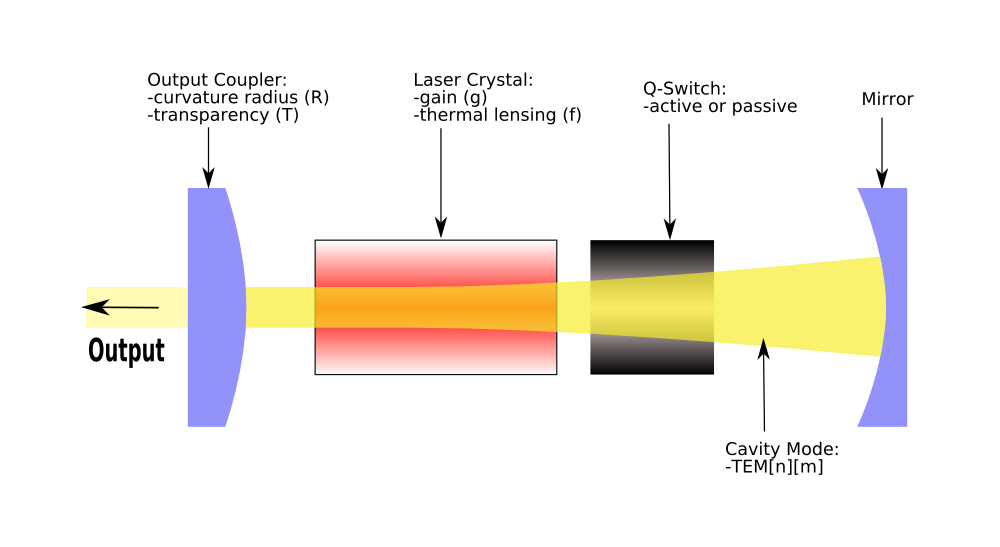

How it Works

A diagram of how the laser works. All credit goes to http://www.yashkir.com/public/laser_diagram.png.
The word "laser" is an acronym short for Light Amplification by Stimulated Emission of Radiation. That pretty much sums up how it works. All a laser is is a light being amplified by stimmulating it with mirrors and some sort of material. What seperates a laser from a regular light is that the light particles in a laser are sped up and lots more energy is generated. First, radiant energy is emitted. Then, the waves pass through a medium, be it solid, liquid, or gas. This energy exites the atoms in the lasing medium, and the medium starts to give off light. As the light rays keep hitting exited atoms, a chain reaction occurs, and more light is generated. The light goes to a 50/50 mirror, half of which reflects light, the other half letting light pass through. The reflected light goes back to a 100% mirror that reflects all light it hits, and then back to the 50/50 mirror. Each time the light hits a mirror, more light is generated, and the strength of the light increases. As more light is generated, the laser quickly reaches a constant strength, and an accurate light is given off.
The color of the light depends on the lasing medium used, and the strength of the light depends on the initial energy and the medium. Laser waves are in the infrared spectrum, which is why the phrase, "infrared" is often associated with lasers.. Lasers can be used in sensors that interpret bounced-back laser light. Lasers can be extremely powerful if enough light is generated, cutting through even the toughest material.